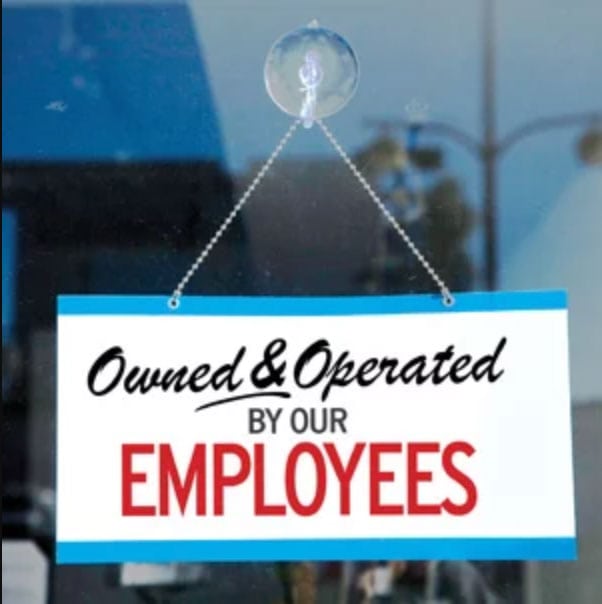
December 5, 2018; CNBC
Much has been written about the growing trend of income inequality in the US; we hear less often about the wealth divide, which is even more stark. While the top 10 percent of US households today own 51 percent of the country’s wealth, the bottom 50 percent own one percent. With no savings to fall back on, families cannot manage emergency expenses—their cars break down and they can’t get to work; they fall behind on the rent and face eviction; a medical expense sends them into bankruptcy. This is the real failure of the American economy: 40 percent of families can’t manage a $400 emergency expense.
Many nonprofit organizations try to fill the gap for America’s struggling families and individuals, whether through direct charity—such as food banks, free medical care, or homeless shelters—or through programs that aim to improve skills and help people find steady employment. Another approach, supported by an array of nonprofits, is to democratize business ownership through cooperatives and employee stock ownership plans (ESOPs) to give workers the opportunity to share in the wealth they are creating.
ESOPs, a corporate structure where a trust is set up for employees to buy company stock through a loan paid off by the company (i.e., employees don’t have to pay for the shares), are far more widespread than coops, though still a small part of the US economy. Nearly 7,000 US companies have ESOPs, with 14 million participants, according to the National Center on Employee Ownership. Joseph Blasi of the Rutgers University Institute for the Study of Employee Ownership and Profit Sharing reports that average asset wealth per employee is $134,000; for employees who have been with a firm more than 20 years, the average is closer to $250,000. That’s significant when one in three Americans has no retirement savings at all.
ESOPs have been shown to have other benefits as well. In a recent webinar for the Aspen Institute, Blasi explained that, when combined with a supportive workplace culture, ESOPs are associated with higher quality jobs as measured by wages, benefits, employee retention, and satisfaction.
Sign up for our free newsletters
Subscribe to NPQ's newsletters to have our top stories delivered directly to your inbox.
By signing up, you agree to our privacy policy and terms of use, and to receive messages from NPQ and our partners.
That’s one of the reasons, according to an article by Susan Caminiti at CNBC that more businesses are considering ESOPs. In a tight labor market, an ESOP can be an attractive benefit offer when recruiting new employees—and it serves as a strong pull when it comes to retention.
Caminiti spoke with Dennis Quaintance, CEO and co-founder of Quaintance-Weaver Restaurants and Hotels in Greensboro, North Carolina. Quaintance and his partners created an ESOP two years ago, turning ownership over to their restaurant and hotel workers. “This is a wonderful way for employees to maintain their mojo,” Quaintance told CNBC. “Every year they are here is another year that they’re seeing their account balance grow. I can’t think of a better way to align everyone’s interests than with an ESOP.”
The evidence suggests Quaintance is right. Companies with ESOPs, according to Blasi’s research, perform better than peer companies. They also show greater resilience in economic downturns.
With all these benefits, advocates for employee ownership are making the case that retiring baby boomer business owners should consider selling their companies to their employees. Over 2.3 million businesses are owned by boomers approaching retirement age. These businesses employ nearly 25 million workers, yet about 80 percent of these owners don’t have a succession plan. It is relatively rare that business owners are able to pass the business on to another family member, and without a succession plan, many close. For Main Streets across the US, there is a real crisis brewing—business closings could overwhelm communities with lost jobs and lost economic revenues. It’s a problem for business owners too, who may not be able to turn the wealth they created into the retirement savings they need.
Offering the company to employees, thus, has multiple benefits. Retiring business owners are able to access the value they’ve created upon exiting and at the same time sustain their legacy as job creators in their communities. Employees acquire shares over time, building their own nest egg as the company value grows. When they leave the company—either for another job or at retirement—employees sell their shares back to the company to access their accumulated wealth.
In August, the Main Street Employee Ownership Act was signed into law as part of the National Defense Authorization Act. This was the first piece of legislation in two decades designed to spur employee ownership, demonstrating the growing bipartisan support for this economic strategy. In addition to providing greater technical support to companies seeking to convert to employee ownership, the law makes it easier for businesses to access guaranteed loans through the Small Business Administration. If successful, growth in employee ownership could be transformative, closing the wealth inequality gap through business equity rather than charity.—Karen Kahn













